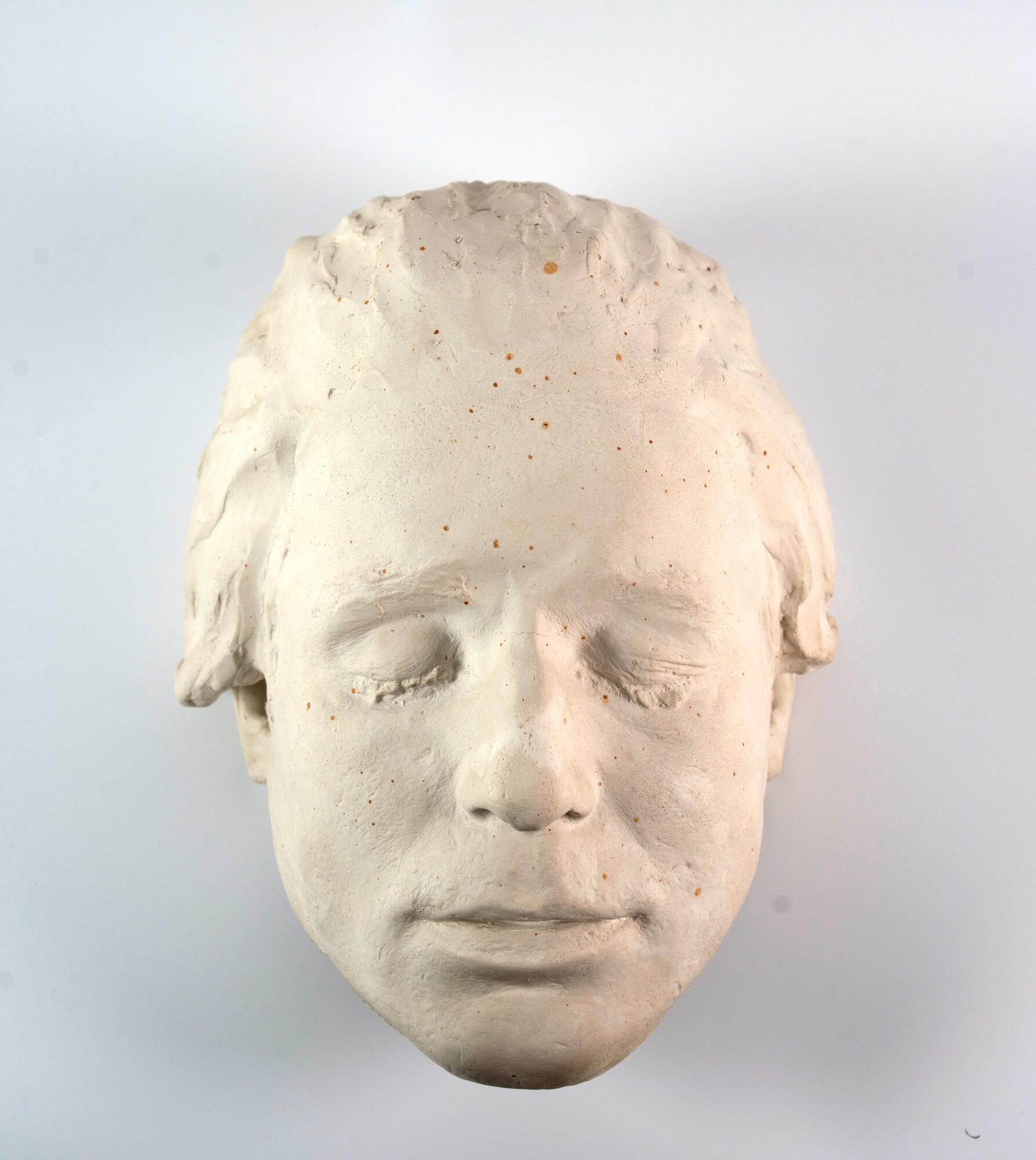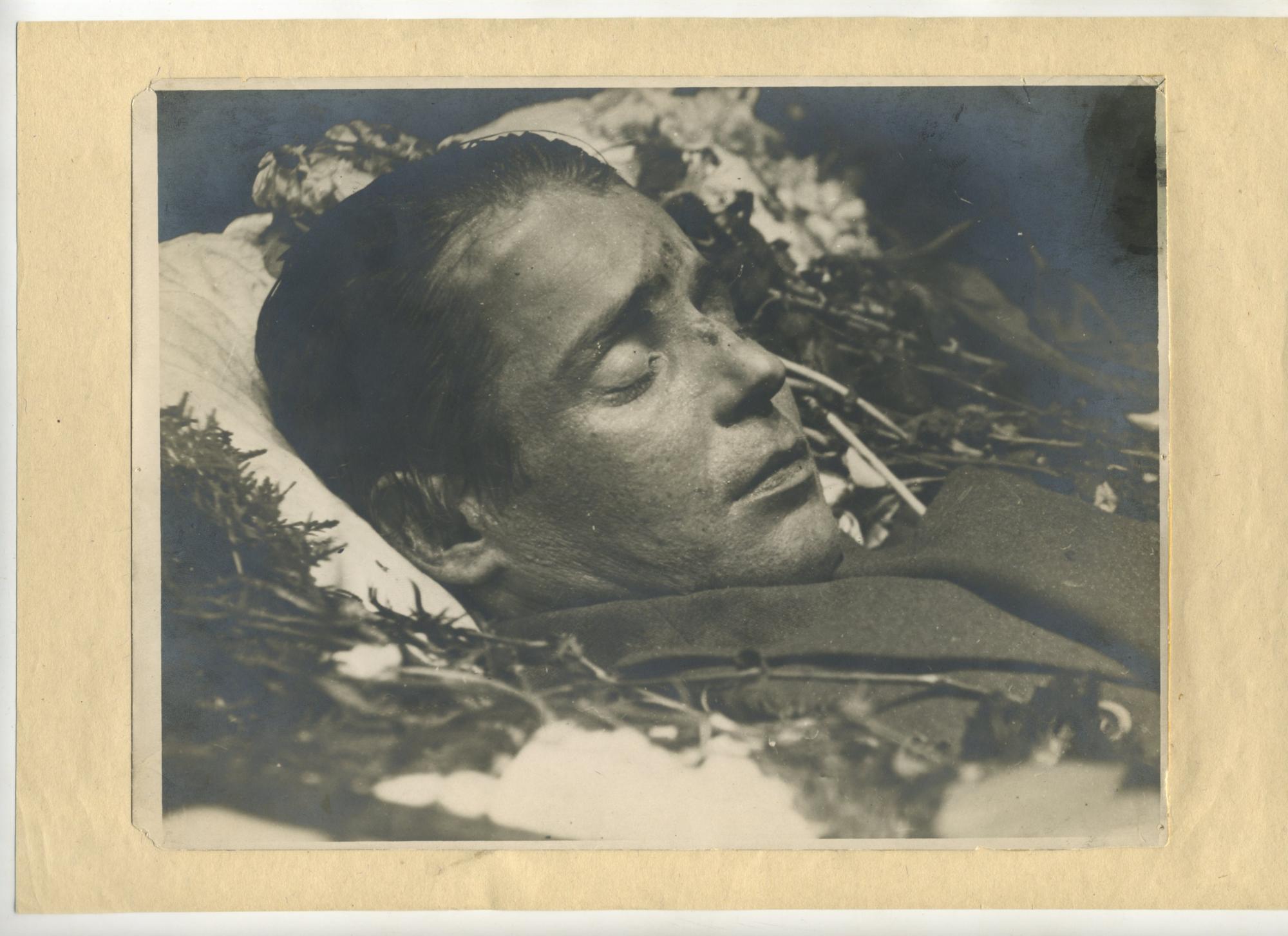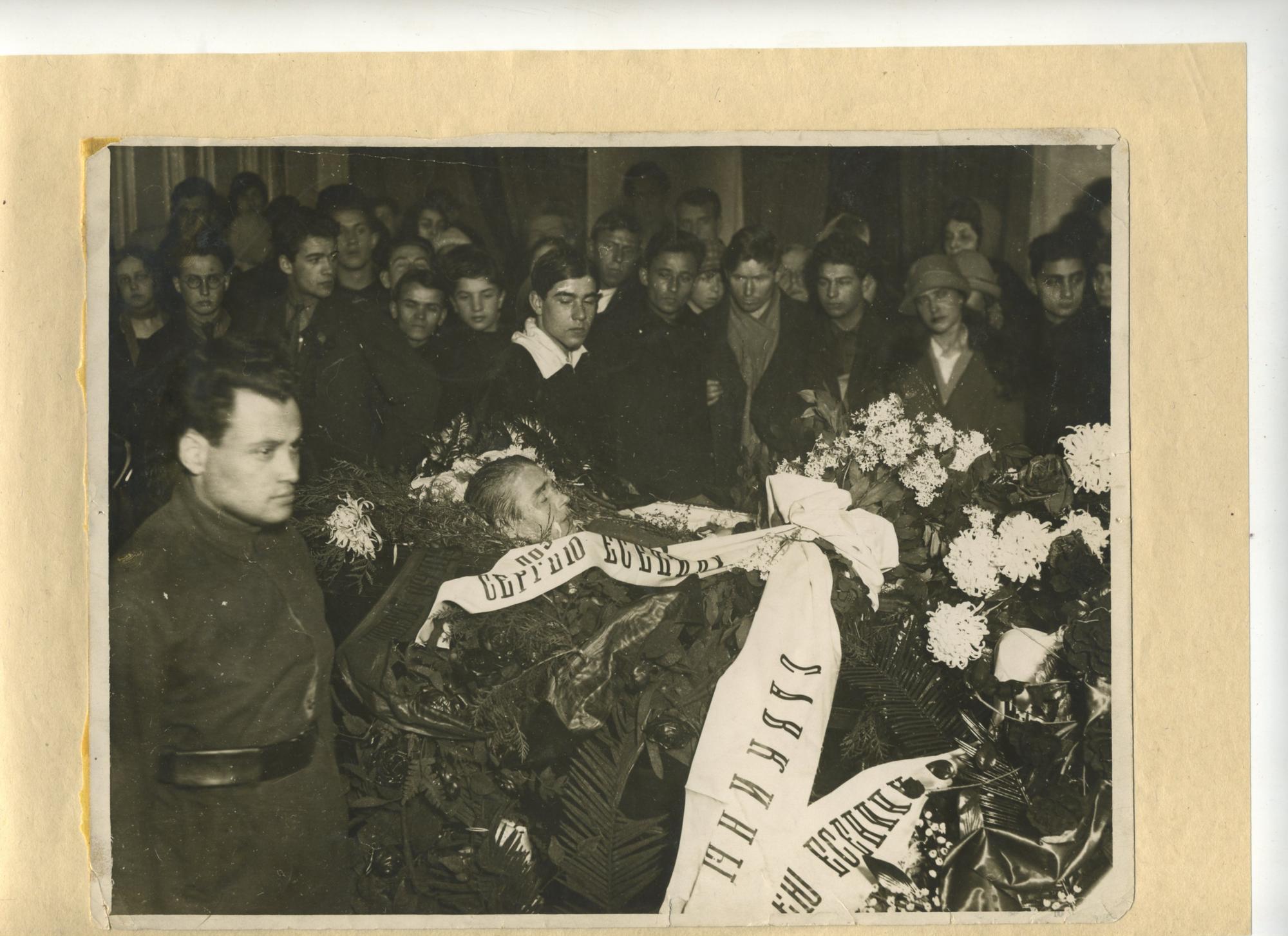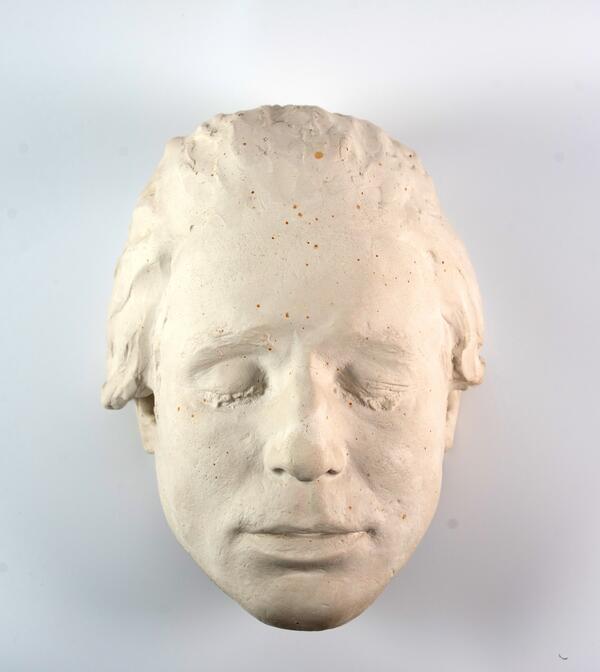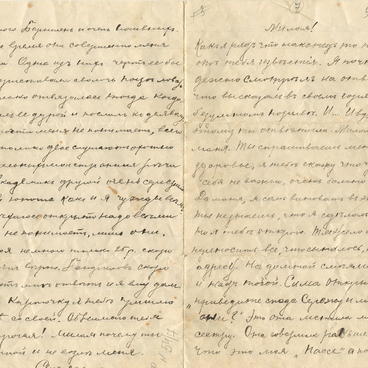Sergei Esenin was found dead in Angleterre Hotel in Leningrad on the 28th of December, 1925. Commemoration took place the next day at the premises of the USSR Union of Writers. It was described in detail by the author Pavel Luknitsky: “Silence has kept for one hour. Nobody made any speeches. The room was crowded, everybody walked quietly. People didn”t talk to each other, while bystanders who started whispering were asked to stay silent. Sofya Andreevna stood by the wall with Shkapskaya, apart from everybody else. Poor and exhausted Erlikh also stood by the wall, alone as well. He did not make any arrangements here, delegated this to others. Klyuyev stood in the crowd, his gaze was fixed on Esenin. He was crying. Someone had put Esenin”s books by his feet in the coffin, Transfiguration was lying on top”.
The poet’s death mask was created by the sculptor Isidor Zolotarevsky. ‘A short, stocky, hairless master dressed in an apron rolled up his sleeves and went about his business… When the master threw a soft sprawling mass of plaster on Esenin”s face with an energetic movement of his hand, Sofya Andreevna (the poet’s last wife — ed. note) burst into tears… The masks were removed. The coffin was once again moved to the large room’, Luknitsky writes. The mask from the collection of S.A. Esenin State Memorial Museum Preserve is made of plaster, appears white with a yellowish hue, and was transferred from the State Literature Museum in 1979. In 1926—1928, the mask was exhibited at S.A. Esenin Museum in Moscow.
The coffin with Esenin’s body was brought from Leningrad to Moscow on the 30th of December. Soviet Government decided to bury Esenin at public expense. Vadim Shershenevich remembered, ‘When the coffin was brought outside the railway station to be put in a hearse, I recall some vagrant coming out of a shelter, approaching the hearse near the bridge, and asking who the dead person was. The vagrant was all tattered, dirty, and unshaved. “Esenin” was the answer. He asked, “Was it the one who wrote poems?” “Yes”, he was told. And then the vagrant collapsed onto a snow bank and cried like a boy. The procession has been long gone, and he was still lying there and crying’. ‘Moscow was burying Esenin with weeping and wailing’, wrote Yuri Libedinsky in his memoirs, ‘Before carrying Esenin to Vagankovskoye Cemetery, we went around the monument to Pushkin with the coffin. We knew what we were doing: he was a worthy successor to Pushkin’s glory’.
The poet’s death mask was created by the sculptor Isidor Zolotarevsky. ‘A short, stocky, hairless master dressed in an apron rolled up his sleeves and went about his business… When the master threw a soft sprawling mass of plaster on Esenin”s face with an energetic movement of his hand, Sofya Andreevna (the poet’s last wife — ed. note) burst into tears… The masks were removed. The coffin was once again moved to the large room’, Luknitsky writes. The mask from the collection of S.A. Esenin State Memorial Museum Preserve is made of plaster, appears white with a yellowish hue, and was transferred from the State Literature Museum in 1979. In 1926—1928, the mask was exhibited at S.A. Esenin Museum in Moscow.
The coffin with Esenin’s body was brought from Leningrad to Moscow on the 30th of December. Soviet Government decided to bury Esenin at public expense. Vadim Shershenevich remembered, ‘When the coffin was brought outside the railway station to be put in a hearse, I recall some vagrant coming out of a shelter, approaching the hearse near the bridge, and asking who the dead person was. The vagrant was all tattered, dirty, and unshaved. “Esenin” was the answer. He asked, “Was it the one who wrote poems?” “Yes”, he was told. And then the vagrant collapsed onto a snow bank and cried like a boy. The procession has been long gone, and he was still lying there and crying’. ‘Moscow was burying Esenin with weeping and wailing’, wrote Yuri Libedinsky in his memoirs, ‘Before carrying Esenin to Vagankovskoye Cemetery, we went around the monument to Pushkin with the coffin. We knew what we were doing: he was a worthy successor to Pushkin’s glory’.
